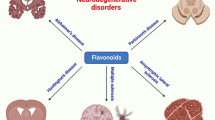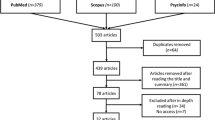Abstract
An urgent task in modern biology and medicine is the study of the biologically active substances that can correct functional cellular activity that has been weakened by various pathologic processes. The neuroprotective properties of short peptides are analyzed in the review with a study of the conditioned reflex in the honey-bee Apis mellifera L. EDR and AEDG peptides stimulated their short-term and long-term memory. EDR peptide also increases the locomotor activity in the fly Drosophila melanogaster in a model of Parkinson disease for a decrease in the expression level of the gene limk1, and it also recovers the short-term memory in Agnst3 mutant. The discovery of the stimulating effect of EDR and AEDG peptides on the function of the central nervous system served as the basis for the testing of drugs for the treatment of pathology of the central nervous system. The parallelism of neuroprotective effect in two animal groups, mammals and insects, indicated the existence of a common, possibly the oldest, mechanism of peptide regulation of the life activities of organisms.

Similar content being viewed by others
REFERENCES
Asok, A., Leroy, F., Rayman, J.B., et al., Molecular mechanisms of the memory trace, Trends Neurosci., 2019, vol. 42, no. 1, pp. 14–22.
Balashova, S.N., Zhernakov, G.L., and Dudkov, A.V., The use of peptide bioregulators in the elderly with psychoemotional disorders, Usp. Gerontol., 2008, vol. 21, no. 3, pp. 448–452.
Bitterman, M.E., Menzel, R., Fietz, A., et al., Classical conditioning of proboscis extension in honeybees (Apis mellifera), J. Comp. Psychol., 1983, vol. 97, no. 2, pp. 107–119.
Bonini, N.M. and Fortini, M.E., Human neurodegenerative disease modeling using Drosophila, Ann. Rev. Neurosci., 2003, vol. 26, pp. 627–656.
Burlakova, E.E., Specific action of ultra-low doses of biologically active substances and low-intensity physical factors, Ross. Khim. Zh., 1999, vol. 43, no. 5, pp. 3–11.
Chalisova, N.I., Penniyainen, V.A., and Nozdrachev, A.D., The stimulatory effect of small doses of inhibitors in organotypic culture of nervous and lymphoid tissues, Dokl. Biol. Sci., 2002, vol. 383, nos. 1–6, pp. 96–98.
Chalisova, N.I., Penniyainen, V.A., Komashnya, A.V., et al., Study of the effect of small doses of biologically active substances on the nervous and lymphoid tissues by the organotypic culture method, Klin. Patofiziol., 2004, no. 1, pp. 25–29.
Chalisova, N.I., Lopatina, N.G., Kamyshev, N.G., et al., Stimulating effect of AEDG tetrapeptide on morphological and functional characteristics of nervous tissue, Mol. Med., 2020, vol. 18, no. 4, pp. 47–54.
Chernova, I.A., Zhilinskii, D.V., Chalisova, N.I., et al., Isolation of peptides from calf brain tissue and evaluation of their tissue-specific and stimulatory activity, Pharm. Chem. J., 2017, vol. 51, no. 6, pp. 434–438.
Doronkin, S. and Reiter, L.T., Drosophila orthologues to human disease genes: an update on progress, Prog. Nucleic Acid Res. Mol. Biol., 2008, vol. 82, pp. 1–32.
Fedoreyeva, L.I., Kireev, I.I., Khavinson, V.Kh., et al., Penetration of short fluorescence-labeled peptides into the nucleus in HeLa cells and in vitro specific interaction of the peptides with deoxyribooligonucleotides and DNA in vitro, Biokhimiya (Moscow), 2011a, vol. 76, no. 11, pp. 1505–1516.
Fedoreyeva, L.I., Kireev, I.I., Khavinson, V.Kh., et al., Penetration of short fluorescence-labeled peptides into the nucleus in HeLa cells and in vitro specific interaction of the peptides with deoxyribooligonucleotides and DNA, Biochemistry (Moscow), 2011b, vol. 76, no. 11, pp. 1210–1219.
Fedoreyeva, L.I., Smirnova, T.A., Kolomijtseva, G.Ya., et al., Interaction of short peptides with FITC-labeled wheat histones and their complexes with deoxyribooligonucleotides, Biochemistry (Moscow), 2013, vol. 78, no. 2, pp. 166–175.
Guryanov, S.A., Kirilina, E.A., Khaidukov, S.V., et al., Fluorescently labeled differentiating myelopeptide-4: specific binding to and penetration into target cells, Russ. J. Bioorg. Chem., 2006, vol. 32, pp. 517–520.
Ivko, O.M. and Trofimova, S.V., Sport i dolgoletie (Sports and Longevity), St. Petersburg: Falcon Crest, 2008.
Khavinson, V.Kh., Peptidy. Genom. Stareneie (Peptides, Genome, and Aging), Moscow: Ross. Akad. Nuk, 2020.
Khavinson, V.Kh. and Anisimov, V.N., Peptidnye bioregulyatory i stareneie (Peptide Bioregulators and Aging), St. Petersburg: Nauka, 2003.
Khavinson, V.K. and Kvetnoii, I.M., Peptide bioregulators inhibit apoptosis, Bull. Exp. Biol. Med., 2000, vol. 130, no. 12, pp. 1175–1176.
Khavinson, V.K., Lezhava, T.A., and Malinin, V.V., Effects of short peptides on lymphocyte chromatin in senile subjects, Bull. Exp. Biol. Med., 2004, vol. 137, no. 1, pp. 78–81.
Khavinson, V.Kh., Viner-Usmanova, I.A., Trofimova, S.V., et al., Metodika povysheniya rezervnykh vozmozhnostei organizma sportsmenok vysokoi kvalifikatsii s pomoshch’yu peptidnykh bioregulyatorov (Increasing of the Reserve Capacities of the Body of Highly Qualified Athletes Using Peptide Bioregulators), St. Petersburg: S.-Peterb. Inst. Bioregul. Gerontol., 2010.
Khavinson, V.K., Solov’ev, A.Y., Zhilinskii, D.V., et al., Epigenetic aspects of peptide-mediated regulation of aging, Adv. Gerontol., 2012, vol. 2, no. 4, pp. 277–286.
Khavinson, V.Kh., Soloviev, A.Yu., Tarnovskaya, S.I., et al., Mechanism of biological activity of short peptides: cell penetration and epigenetic regulation of gene expression, Biol. Bull. Rev., 2013, vol. 3, no. 6, pp. 451–455.
Khavinson, V.Kh., Lin’kova, N.S., Tarnovskaya, S.I., et al., Short peptides stimulate serotonin expression in cells of brain cortex, Bull. Exp. Biol. Med., 2014, vol. 157, no. 1, pp. 77–80.
Khavinson, V.Kh., Lopatina N.G., Chalisova, N.I., et al., Effect of pinealon tripeptide on the development of conditioned reflex activity in a honey bee, Fundam. Issled., 2015a, vol. 2, no. 2, pp. 491–496.
Khavinson, V.Kh., Chalisova, N.I., Lin’kova, N.S., et al., The dependence of the tissue-specific action of peptides on the number of amino acids in their composition, Fundam. Issled., 2015b, vol. 2, no. 3, pp. 497–503.
Khavinson, V.Kh., Lin’kova, N.S., and Tarnovskaya, S.I., Short peptides regulate gene expression, Bull. Exp. Biol. Med., 2016, vol. 162, no. 2, pp. 288–292.
Khavinson, V.K., Kopylov, A.T., Vaskovsky, B.V., et al., Identification of peptide AEDG in the polypeptide complex of the pineal gland, Bull. Exp. Biol. Med., 2017a, vol. 164, no. 1, pp. 41–43.
Khavinson, V.Kh., Linkova, N.S., Kukanova, E.O., et al., Neuroprotective effect of EDR peptide in mouse model of Huntington disease, J. Neurol. Neurosci., 2017b, vol. 8, no. 1, pp. 1–11.
Kozina, L.S., Arutyunyan, A.V., Stvolinskii, S.L., et al., Assessment of the biological activity of regulatory peptides in model experiments in vitro, Usp. Gerontol., 2008, vol. 219, no. 1, pp. 68–73.
Kraskovskaya, N.A., Kukanova, E.O., Linkova, N.S., et al., Tripeptides restore the number of neuronal spines under conditions of in vitro modeled Alzheimer’s disease, Bull. Exp. Biol. Med., 2017, vol. 163, no. 4, pp. 550–553.
Lopatina, N.G., Ryzhova, I.V., Chesnokova, E.G., et al., L-glutamate receptor in the central nervous system of the honeybee Apis mellifera and its role in the process of acquisition of conditional reflex and memory traces, Zh. Evol. Biokhim. Fiziol., 1997, vol. 33, no. 6, pp. 506–512.
Menzel, R., The insect mushroom body, an experience-dependent recording device, J. Physiol. (Paris), 2014, vol. 108, nos. 2–3, pp. 84–95.
Milyutina, Yu.P., Kozina, L.S., Arutyunyan, A.A., et al., Effect of peptide preparations of the pineal gland on proliferative processes in organotypic culture of the preoptic region of the hypothalamus, Usp. Gerontol., 2007, vol. 20, no. 4, pp. 61–63.
Ostrovskaya, R.U., Gruden, M.A., and Bobkova, N.A., The nootropic and neuroprotective proline-containing dipeptide noopept restores spatial memory and increases immunoreactivity to amyloid in an Alzheimer’s disease model, J. Psychopharmacol., 2007, vol. 6, pp. 611–619.
Petrova, E.S., Vimentin and glial fibrillar acidic protein in ectopic neurotransplant cells of rat neocortex, Morfologiya, 2011, vol. 139, no. 2, pp. 22–26.
Pfleger, C.M. and Reiter, L.T., Recent efforts to model human diseases in vivo in Drosophila, Fly (Austin), 2008, vol. 2, no. 3, pp. 129–132.
Popugaeva, E. and Bezprozvanny, I., Role of endoplasmic reticulum Ca2+ signaling in the pathogenesis of Alzheimer disease, Front. Mol. Neurosci., 2013, vol. 6, pp. 1–7.
Russo, L.C., Asega, A.F., Castro, L.M., et al., Natural intracellular peptides can modulate the interactions of mouse brain proteins and thimet oligopeptidase with 14-3-3ε and calmodulin, Proteomics, 2012, vol. 12, no. 17, pp. 2641–2655.
Ryzhak, A.P., Chalisova, N.I., Lin’kova, N.S., et al., Peptide regulation of cells renewal processes in kidney tissue cultures from young and old animals, Bull. Exp. Biol. Med., 2015, vol. 159, no. 1, pp. 124–127.
Ryzhak, G.A., Malinin, V.V., and Platonova, T.N., Korteksin i regulyatsiya funktsii golovnogo mozga (Cortexin and the Regulation of Brain Functions), St. Petersburg: Foliant, 2001.
Savvateeva-Popova, E.V., Zhuravlev, A.V., Brázda, V., et al., Drosophila model for the analysis of genesis of LIM-kinase 1-dependent Williams–Beuren syndrome cognitive phenotypes: INDELs, transposable elements of the Tc1/mariner superfamily and microRNAs, Front. Genet., 2017, vol. 8, pp. 1–13.
Umnov, R.S., Lin’kova, N.S., and Khavinson, V.K., Peptides stimulate expression of signal molecules in neuronal cultures from animals of different age, Bull. Exp. Biol. Med., 2014, vol. 157, no. 5, pp. 701–704.
Vanyushin, B.F. and Khavinson, V.Kh., Short biologically active peptides as epigenetic modulators of gene activity, in Epigenetics—A Different Way of Looking at Genetics, Doerfler, W. and Böhm, P., Eds., Cham: Springer-Verlag, 2016, pp. 69–90.
Zakutskii, A.N., Chalisova, N.I., Ryzhak, G.A., et al., Tissue-specific effect of synthetic bioregulatory peptides in organotypic tissue culture of young and old rats, Usp. Gerontol., 2006, vol. 19, no. 1, pp. 93–96.
Zhang H., Li, Q., Graham, R.K., et al., Fulllength mutant huntingtin is required for altered Ca2+ signaling and apoptosis of striatal neurons in the YAC mouse model of Huntington’s disease, Neurobiol. Dis., 2008, vol. 31, pp. 80–88.
Zhurkovich, I.K., Kovrov, N.G., Ryzhak, G.A., et al., Identification of short peptides as part of polypeptide complexes isolated from animal organs, Usp. Sovrem. Biol., 2020, vol. 140, no. 2, pp. 140–148.
Author information
Authors and Affiliations
Corresponding author
Ethics declarations
Conflict of interests. The authors declare that they have no conflicts of interest.
Statement on the welfare of humans or animals. All applicable international, national, and/or institutional guidelines for the care and use of animals were followed.
Rights and permissions
About this article
Cite this article
Chalisova, N.I., Ryzhak, G.A. & Ivko, O.M. Protective Effect of Short Peptides on the Insect Nervous System. Biol Bull Rev 11, 597–601 (2021). https://doi.org/10.1134/S2079086421060025
Received:
Revised:
Accepted:
Published:
Issue Date:
DOI: https://doi.org/10.1134/S2079086421060025




